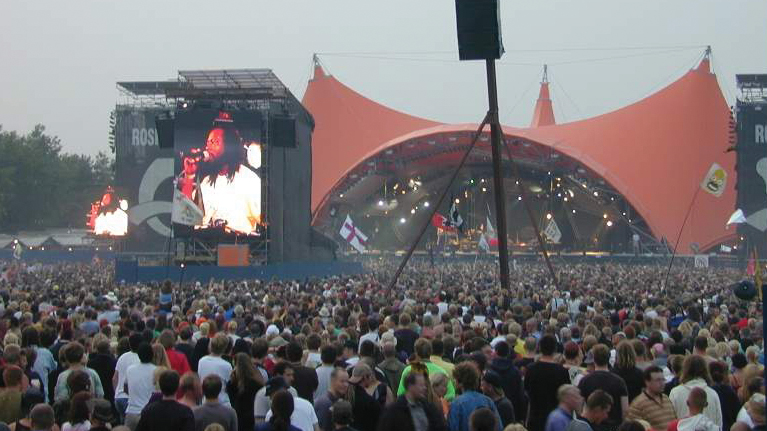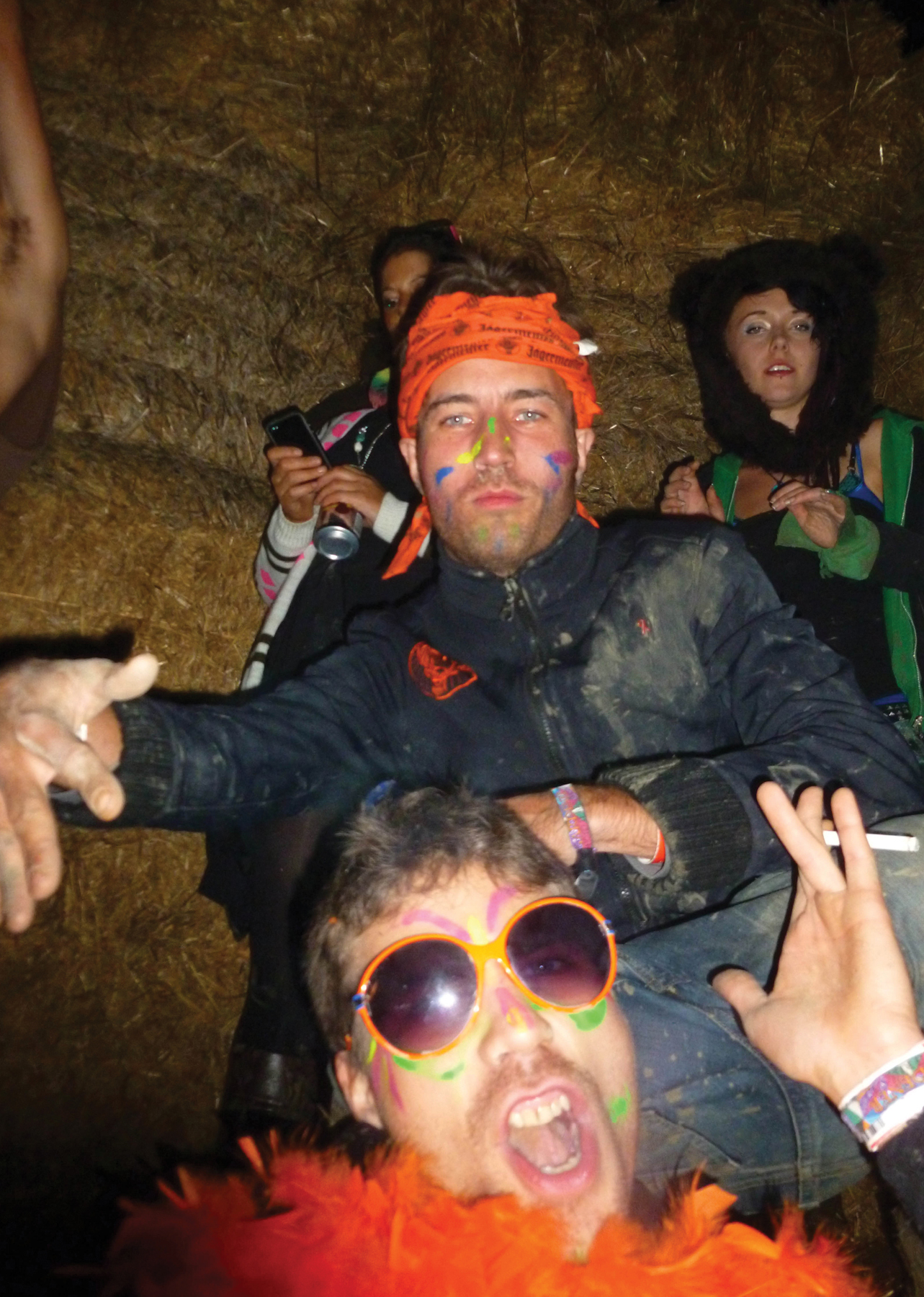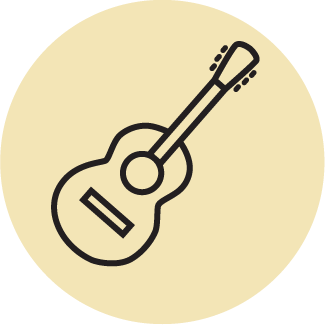
MUSIC
Every country has distinct musical roots, and globalization has remixed the world’s music scene into some interesting sounds. From regional musical superstars, globally inter-twined genres, live festivals, and the busking culture, the music of the world is best experienced live. Pick up a fiddle and jam in Belfast with the drunkest musicians on the planet, or shed a tear to the sad fado tunes in Portugal. While we can tell you everything we know about hip-hop in Senegal, it’s up to you to get out there and actually feel the bass thumping yourself.
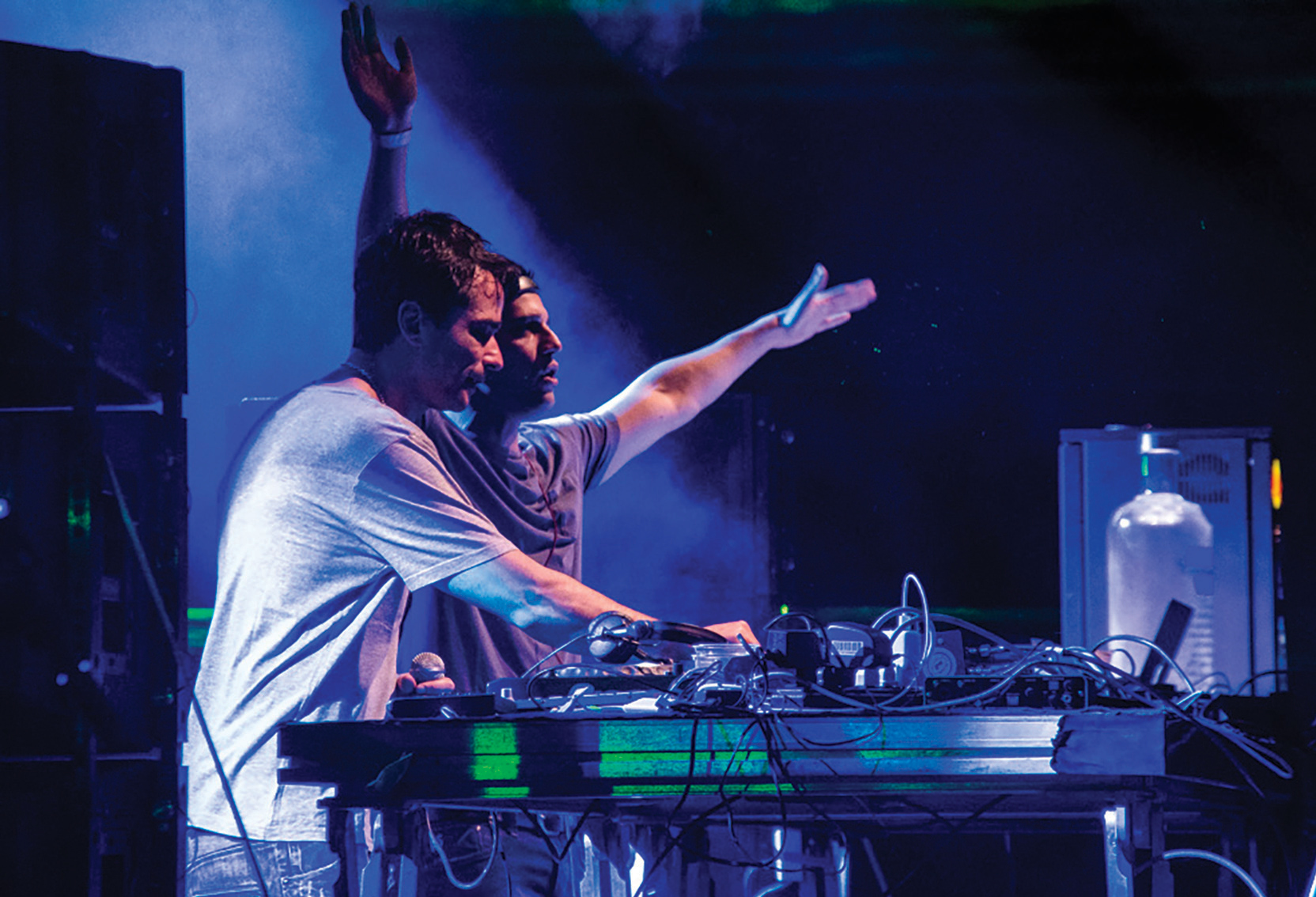

 BELFAST
BELFAST
SINGING WITH THE IRISH—WHEN BOOZE AND TUNES COLLIDE
Many of Belfast’s pubs have been hosting the drunk and rowdy since the seventeenth century. In these historic pubs, you can warm up and listen to traditional Irish music for free, until you’re ready to join in and lend your vocal cords to a little Irish bending. You will emerge feeling like the winner of American Idol and smelling like an alleyway on St. Patrick’s Day.
LOOKING FOR TREBLE TROUBLE
You can find Irish music almost any night of the week. Some sessions begin with a few musicians, and as the night (and the pints) go on, others will often join in. These are called “traditional sessions,” and, as you may expect, most musicians take a long Guinness break between every song. Occasionally, you might see a fight or a jig break out; in either case you can join in or sit back and watch.
IRISH INSTRUMENTS
Your Jameson-flooded eyes aren’t playing tricks on you; the Irish are known to have some funky music makers. Uilleann pipes are kind of like bagpipes except the air is pumped with the elbow instead of the mouth—sure, it looks goofy, but the Irish bust out some quality jams on these things. You also might see a pear-shaped, guitar-like instrument known as a bouzouki. This thing came to Ireland in the mid-’60s from Greece and is now a staple in Irish jigs. To round out the band, flutes, fiddles, harps, and accordions will all chime in.

JIGGA WHERE?
Madden’s has the best Guinness, features sessions almost every night, and brings in a mostly local crowd. You have to buzz the door for entry, a relic of the days when the Protestant/Unionists would attack Catholic/Nationalist pubs and vice versa. Around the corner is seedier Kelly’s Cellar pub, where you won’t have trouble finding a fight to go with your pint. Aside from being the oldest building in the city of Belfast, McHugh’s is one of the big daddies in food and music, and has an early-bird session on Saturday afternoons. The Garrick is aces for pub grub and for catching a few football (soccer) matches before the music begins.
Drunken Irishmen and musical instruments are the hallmark of any successful trip to the Emerald Isle. If you haven’t hugged a few leprechaun-lovers, sung yourself into hoarse oblivion, and drunk enough Guinness to turn your stomach into an Easy-Bake Oven by the end of your trip, stock up on lucky charms and try again.
 CUBA
CUBA
RUMP SHAKIN’
Mamis and papis from Havana to Guantanamo prowl and wink and love and dance from dawn till dusk. A necessity for pleasure, work, and everything in between, music is to daily life what foreplay is to sex—and room-by-the-hour hotels are more common than Coca-Cola in Cuba.
THE BEAT BEGINS
Cuban girls learn to gyrate before they have hips, and mambos, pachangas, and bachatas flow through the blood of every Cuban human. The 1940s were the Golden Age of Cuban music, when gangsters in furs driving “Yank Tanks” rolled up to the Buena Vista Social Club to swap cigars and get laid. The nightclub is still hedonism’s headquarters, even if dancing styles have changed. You can forget the salsa lessons if you’re hitting the scene—today’s merengue and reggaeton bumps and grinds more like hip-hop.
SHAKE IT UP!
Cuban nightclubs may be responsible for some unplanned pregnancies, and no one can say they don’t bring the ass-thumping dance full force. Havana and Santiago de Cuba are the island’s dance hubs. Get down and dirty at Havana’s El Chévere, an open-air reggaeton club with an open bar special. If you’re trying to get fancy in the capital city, slip on those heels and hit up a live reggaeton show at Café Cantante Mi Habana.
FLOCKS OF FUN
If you’re looking for some girl-girl, boy-boy, or boy-girl-girl-boy action, Havana is where it’s at. The pajaritos of Cuba, a saucy, endearing term for gays that means “little bird,” know how to party. “Fiestas de diez pesos” are roaming LGBT dance parties that typically cost 10 pesos. Hang out along the Malecón and keep an ear to the street to find out where it’ll go down.
DOWNTEMPO
Despite the island’s thumping bass line, Cubans can chill with the best of them and music is an important component to relaxation. Traditional café Cubanos serve up sexy charangas—traditional music ensembles—as a matter of course. Smaller towns, such as Trinidad or Vinales, are better for intimate performances. Café Cantante in Santiago bills killer salsa and bolero music, and the city’s Casa del Caribe keeps it classy with Afro-Cuban, Latin, and Caribbean performances. Shit goes nearly 24/7 at the Casa de la Musica in Havana, so you can move hard, then pass out to hot jams all in the same place and without skipping a beat.
No matter how you get down, moving your body is a Cuban test of virility, and the beat of the country pulses from the Gulf of Mexico to the Caribbean Sea.
 MONTREAL
MONTREAL
IGLOOFEST
A city known better for its hockey than its party scene, Montreal opens its doors to thousands of drunken rave seekers during Igloofest and encourages everyone to party themselves stupid in the dead of winter. Held on the water, Igloofest is a rave in the name of all things freezing and fun. Join 10,000 French Canadians wearing their most ridiculous ski suits on the streets of Old Montreal and follow them down to the water to dance off the hypothermia.
FREEZE FRAME
From a distance all you can see are glowing lights and massive blocks of ice. Coming closer, the bass hits your eardrums as the party body count begins to rise. If you’re down to dance and have a good time, Montreal is happy to play host to whatever level of debauchery you bring them (as long as you don’t bitch about the cold).
Ice sculptures and monstrous, brightly colored, glowing fake igloos cover the festival grounds. There are tug-of-war and best ski suit contests, open fires for roasting marshmallows, and more Jaeger and Sapporo than anyone could ever drink, even with 10,000 friends.
Every Thursday, Friday, and Saturday throughout January, Igloofest rages on with new DJs from all around the globe. They’re so dedicated to the winter theme that even the DJs’ table is made entirely of ice blocks. The lights and lasers reflect off the falling snow and ice to create a stunning visual experience. At Igloofest, the music comes second to the good times and since the music is usually on-point, good times turn into great times quick.

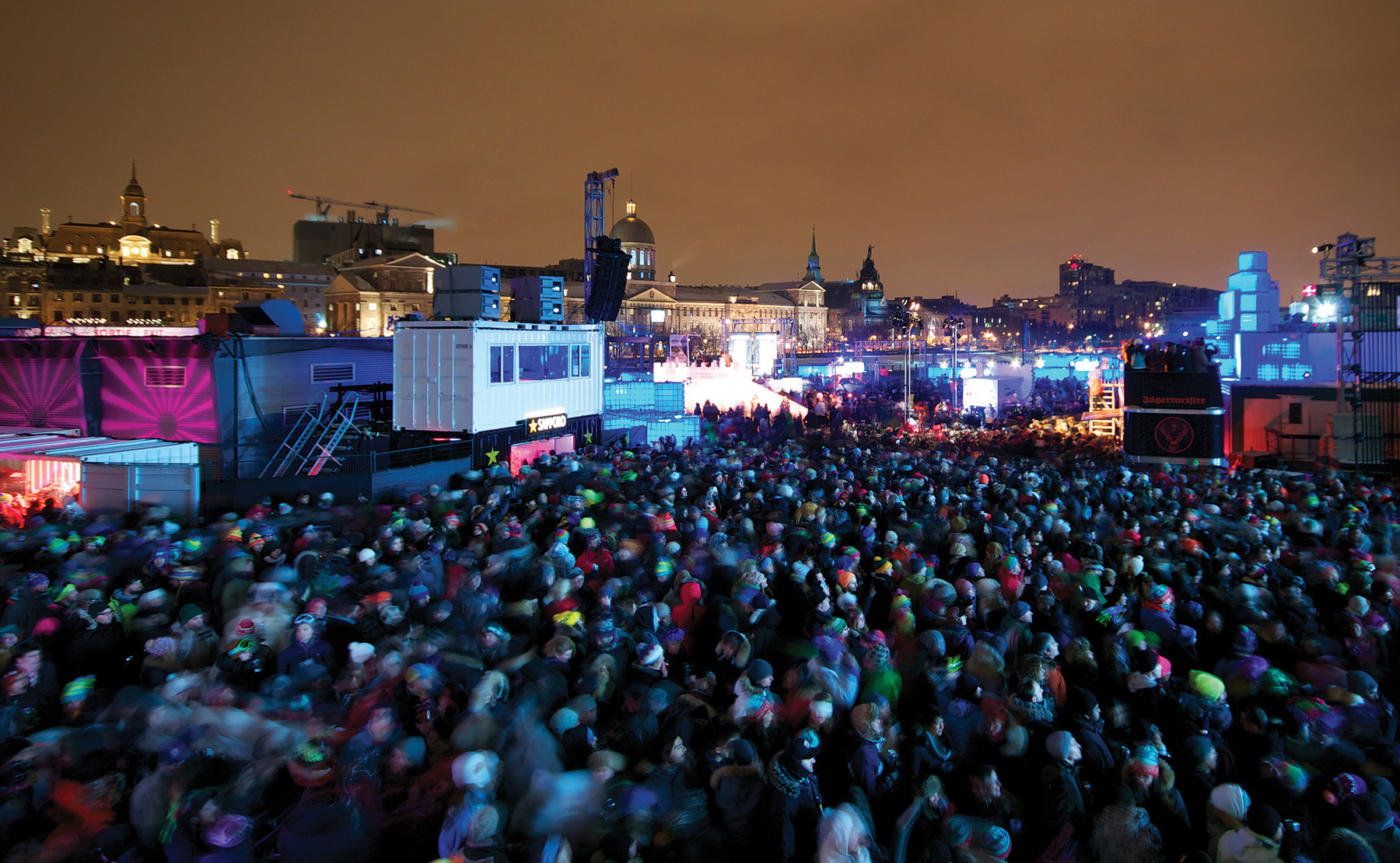
PROUD TO BE CANADIAN
Canadians love their country and show off what they have to offer front and center. The party isn’t happening at some open field outside the city limits, but practically downtown, right on the river in Old Montreal. To preserve some Canadian pride, for every globe-trotting DJ that spins at Igloofest, there is a local Canadian DJ spinning the same night on the same stage. Playing host to a rave for 10,000-plus EDM party animals automatically makes you cooler than, say, Lincoln, Nebraska. In addition to throwing a great party, Montreal’s winter bars kick ass. Check out the Dominion Tavern on Metcalfe Street. With large leather booths lining the walls, this bar is like taking the DeLorean back about 100 years. The whole thing is made of ancient oak and manned by skilled bartenders who only need sleeve belts to complete their Golden Age getup. They’ve got enough scotch in there to give you hallucinations of a scribbling Mark Twain posted up in the corner.
HAULIN’ ASS AROUND TOWN
Buried deep below the ground, the subway often looks more like something from Lord of the Rings than an entrance to mass transit. But five escalators later, you arrive at a clean, concise, and fast metro system that will get you anywhere you might need to go within the city limits. While there is no shortage of cabs or buses, the subway system is legit and will haul your confused ass anywhere you need to be. As far as staying in the city for the festival, since Igloofest is downtown, there are many hostel options only a few subway stops away from the action.
Perhaps Igloofest is an überpolite way for Montreal to say, “fuck you, ay!” to America. We poke fun at their pronunciation of “about,” but when it comes to cold weather partying, Montreal has America beat big time. While we sit inside counting dust bunnies and waiting for spring, in Montreal, they embrace the winter freeze, marching down to the coldest part of their city to drink, dance, and share good times with thousands of brave strangers.
 PORTUGAL
PORTUGAL
WHAT THE F*CK IS FADO?
Fado, literally translated, means “prophecy,” “fate,” or “destiny.” Culturally, it is known as the “soul of Portugal.” A heart-wrenching form of musical poetry, fado is a style of song that came out of tiny Portugal’s big-shot days, when explorers set off to sea to discover new lands while the women they left behind longingly wailed across the water, awaiting their return. If you’re ever feeling homesick abroad, gather yourself and find some solidarity with fado.
SOUNDS LIKE…
Influenced by former Portuguese colonies—as well as North African jams—and blended with Portuguese poetry and urban folk tradition, the music is haunting and evocative (something like a blend of mellow Hawaiian tunes and flamenco), and embraces the concept of saudade, roughly interpreted as “melancholy.” A twelve-string Portuguese guitar that looks like a knocked-up banjo traditionally backs the vocals.
HEY, WHO FADO-ED?
Portugal wasn’t always so embracing of fado—at one point it was predominantly sung by prostitutes in brothels and considered evil. These days you’ll find legit fadistas singing in the Moorish Alfalma district in Lisbon. Fado performances are generally held in dimly lit taverns known as casas de fado, which are bare bones in terms of acoustics. It’s considered impolite and distracting to the fadista to eat while she or he is singing, and the food at these joints tends to be on the crappy side anyway.
POKE AROUND PORTUGAL
Take a road trip down to the University town of Coimbra, where the fado has a different flavor. Coimbra fado is more likely to be sung by a man or men (vs. women in Lisbon), and because the town is all about university smarts, the musical style is more affiliated with the intellectual class than its blue-collar counterpart in the capital. Check out the Fado ao Centro (Fado Center) for an inexpensive and enlightening performance. Round out your folk-music vacation in Oporto, where you can sip some thick and sweet fortified port wine. Let out the last of your sobs at Casa da Mariquinhas, the oldest and best-known fado house in Oporto.
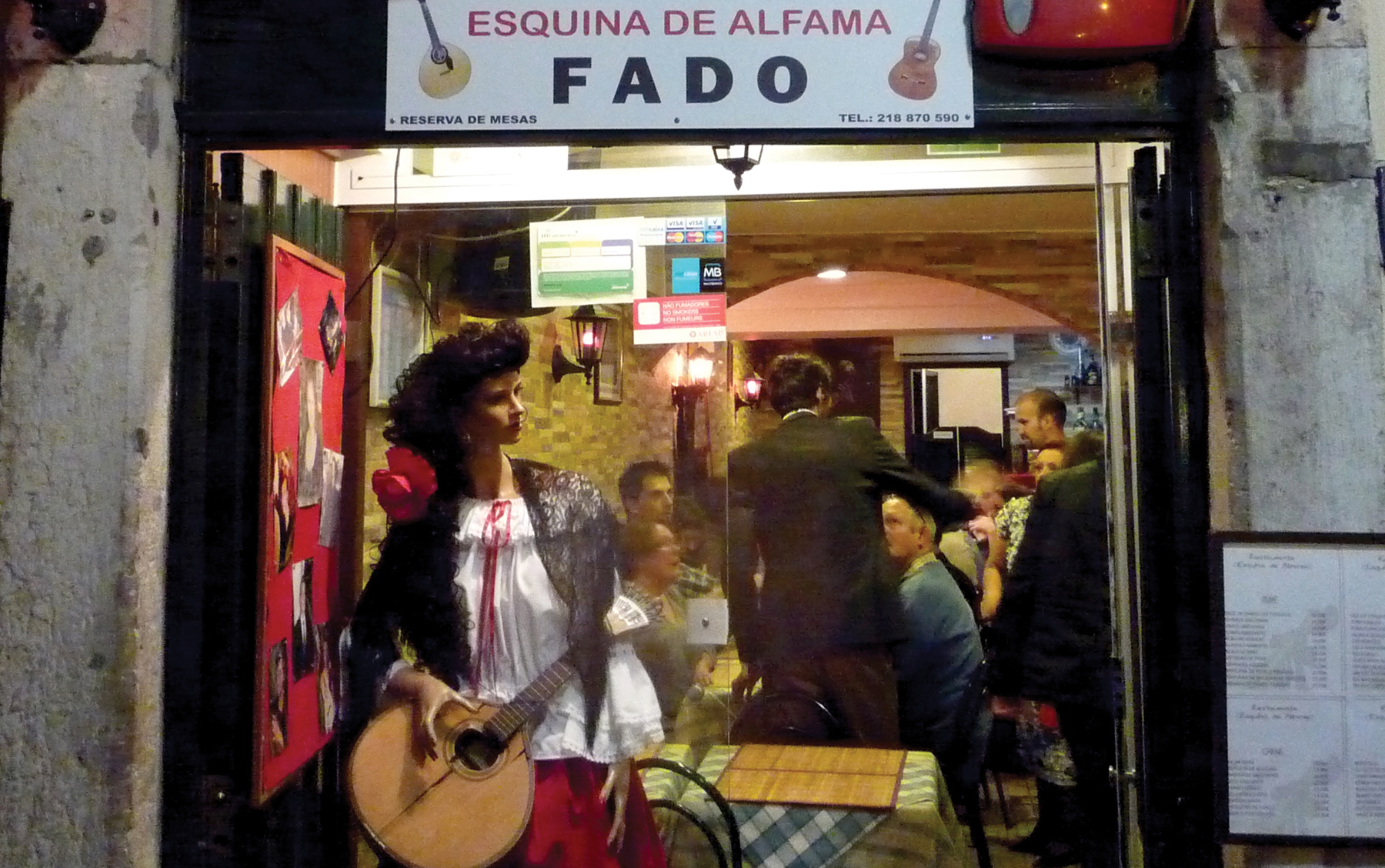
KNOW YOUR FADO
If you get into a fado name-dropping predicament, Amália Rodrigues, who sang in the Lisbon style, is an important one to know. Early in Rodrigues’s career, she began renovating fado’s melodies, modernizing them, and setting some to sixteenth-century poems by Luís de Camões. While many fado traditionalists criticized this finagling with the classics, most came to love her, and she is now considered the “Queen of Fado,” as well as a national icon.
 SENEGAL
SENEGAL
HIP-HOP PIONEERS
The youth of Senegal have been busting beats since the ’80s. Today, they’re influencing the rest of the African continent to hop to their hips. A genre that has traditionally been defined by money, cars, and clothes, hip-hop here is a cultural movement covering the social and political life in Senegal (kind of the way New York originally intended it to be). Let the sound in, see your thoughts spin, and get to know the Senegalese flow.
HOW IT ALL STARTED
Before lyrical assassins started murdering drum-filled, bouncy beats, the musically-inclined nation of Senegal had griots. These were a respected people—separated into their own caste—who were responsible for speaking about society through song. Oral historians and cultural traditionalists, griots would sing anywhere and about everything; like Twitter, if it was trending, they were covering it. With Senegal becoming more modernized by the mid 1980s, its youth yearned for a new voice. Griots faded out and hip-hop artists came in.
THE RAP
Think of Senegal’s capital city of Dakar as the impact point of a hip-hop bomb that exploded with flavor and rapidly produced new artists. Senegal’s artists use the past to light their bright future as they are influenced largely by hip-hop’s beginnings in the South Bronx. The native Wolof tongue (along with French and English) is used to produce raps that cover all kinds of serious shit like crime, corruption, HIV/AIDS, poverty, and ethnic strife. Beats are often backed by the banging of traditional Senegalese drums and—more so than American hip-hop—the art form is widely heard, appreciated, and understood.
WHO YOU SHOULD KNOW
Daara J (meaning “the school of life”) is a group of artists who draw on cultural diversity to get their messages to appeal to the masses. Papa Moussa Lo, better known as “Waterflow,” uses his hip-hop talents to be the voice of the voiceless. The duo who comprise PBS (Positive Black Soul) take a similar approach by rapping their positive, feel-good stories in French, English, and Wolof. Africulturban—a cultural center for hip-hop founded by famed Senegalese rapper Matador—holds free hip-hop festivals to get young people into the groove. People across the continent love to bob their heads to the beats and listen to the thought-provoking lyrics. Hip-hop can change the here and now, and Senegal is a perfect example of where and how.
 SEOUL
SEOUL
KARAOKE HEADQUARTERS
With an estimated two million Koreans channeling their inner Beyoncé each day, there is no better way to sing to the song of a local in Seoul than getting wasted and belting out some utterly embarrassing tune in the company of friends and strangers.
STARTING OFF WITH A NORAEBANG
Invented in Japan in the 1970s, karaoke traveled to Korea in the 1980s and never left. Koreans refer to karaoke as noraebang or “song room,” which is exactly where you’ll be going with your falsetto-fabulous Korean friends in Seoul. A private room designed for you to pretend like you’re on an arena stage in front of five to thirty of your new besties, noraebangs are everywhere in Seoul and easy to spot even if you don’t read Korean: just look for a neon sign with a microphone or musical symbol.
NAME THAT TUNE
After a long binge out on the town, head to a noraebang, where you can sing your heart out until someone’s ears bleed. The monster songbooks are normally filled with thousands of songs in Korean and English (a few German songs might be thrown in there, too). This is the time to drop your inhibitions and embrace your pop princess. Don’t fret if you need backup; most rooms are equipped with two microphones. If you really get into the groove, pick up one of the tambourines that come with most rooms and add a little jangle to your jingle. Copious amounts of soju (and snacks) are brought to the room and they keep liquid courage on tap so you can squeal and shimmy until sunrise.
WE ALL SCREAM FOR NORAEBANG
Each noraebang in Seoul is an opportunity to enter a unique, themed wonder-world of amateur song. If you really want to go out with a bang, hit up Luxury, a noraebang in Hongdae, which looks like a ginormous, neon dollhouse. If singing in Barbie’s dream house isn’t enough, Luxury offers free ice cream! Feeling furry? The noraebang History001 near Konkuk University gives you an opportunity to wear animal costumes while singing. They also offer free ice cream! You scream, I scream—just try not to scream in the microphone.
JUST SOJU KNOW
Russians have vodka, Americans have Budweiser, and Koreans have soju. The most popular spirit in Korea has been getting peeps in the party mood since the thir-theenth century.
Traditionally distilled from rice, nowadays soju is often combined with another grain—like wheat or barley—and even comes in fruity flavors like apple. It’s most commonly enjoyed in large groups with food. Remember to mind your soju manners, kids: two hands are better than one when offering, accepting, and drinking; and your hands should never pour your own glass—out of respect, let someone else do the dirty work.

